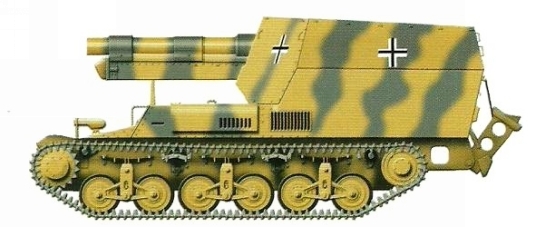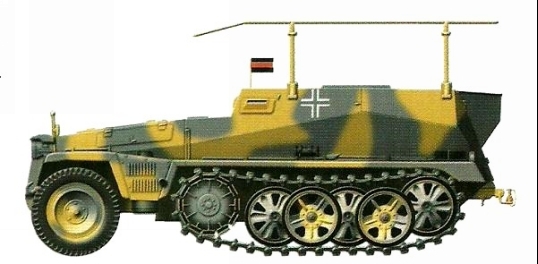But even as the rearward movement was taking place a fresh British thrust carried past the right wing of 164th Division and broke through the Sahara patrol group forcing it to give up more ground under British pressure. The Panzer Army moved back to occupy another temporary line south-west of Agareb on 9 April and, when the final stages of the retreat had been concluded on llth, 164th and 90th Light were in position to the south-west of Enfidaville.
This new line was the southern face of the Axis-held area of Tunisia and had such excellent defensive features that it was considered to be the last ditch defence. Possession of the high ground around Djebel Zaghouan dominated a network of main roads: the Kairouan—Pont du Fahs highway, the Sousse— Enfidaville—Tunis road, and the Sousse—Enfidaville—Gromballia—Tunis road. Thus the high ground and particularly Djebel Garci, a steep and bare feature with several crests, dominated any advance from Sousse into the plains around the capital city.
To hold the last ditch positions XXI Corps held the right sector and had under command Spezia and Pistoia Divisions and the Luftwaffe Infantry Brigade. The Italian XX Corps held the left flank with Trieste, Young Fascist, and 90th Light Divisions. As usual the. German units held the most threatened sectors. The 164th Division was blocking the Pont du Fahs road, east of Djebel Garci the Luftwaffe Brigade dug in to control the Zaghouan road, while 90th Light covered the Enfidaville-Gromballia highway. The Italian units held the high ground with Spezia on the extreme right flank and Trieste and Young Fascist Divisions on either side of Takrouna. A secondary defence line behind the Young Fascist positions was held by non-armoured units from 15th Panzer. Parts of 10th Panzer came under command of Africa Corps and were located on the far right flank where they were joined some weeks later by elements from 21st Panzer Division.
To help hold the line there was a sudden but small spate of reinforcements and the numbers reaching 164th Division enabled second battalions to be formed for 382nd and 433rd Regiments. Battalions and artillery detachments from other units were also taken on divisional strength but the greatest number of these, and all the artillery, flak, and Nebelwerfer batteries, were taken from 164th Division when the Allied offensive opened and were then posted to 5th Panzer Army.
One of the most warmly interesting of the letters dealing with the attitudes of the German rank and file at that time is the report written by a young regimental officer after a tour of inspection to the front line. He wrote:
'On 11 April in the burning sun of mid-morning I saw eight men of 1st Battalion marching along the Kairouan—Enfidaville road in full equipment carrying arms and extra ammunition. They had had no food and had already marched for 25 miles before I met them. They were on their way to new positions at Zaghouan and refused my offer of a lift to any wounded saying that they would do the "little bit" of a march to Zaghouan. They arrived at battalion before nightfall.'
There was quiet along the sector held by 164th Division until the morning of 16 April when British artillery began to 'range in' and patrolling activity was reported. Three more days of calm passed but then Pistoia Division was hit during a night attack. The reconnaissance detachment of 164th Division, acting as reserve, was brought forward to capture the positions which the Italians had abandoned and on 21 April the Italians made their own counter-attack but this collapsed and broke in the face of British artillery fire. It was clear that Pistoia could no longer be considered an effective fighting force and it was removed from the line.
The next Italian division to come under the hammer blows of Montgomery's Army was Young Fascist but it held its ground on the Takrouna heights despite fierce attempts to drive it back, while on the Enfidaville plain the 90th Light was heavily engaged. A minor adjustment of the line to shorten this and thus to release men was carried out and these units were then sent to help the hard-pressed Hermann Goering Division north-west of Pont du Fahs. On 29 April the Spezia Division was forced off the heights which it had held.
The absence of British armour on the Enfidaville front pointed to the fact that 8th Army's tank divisions had been moved and, obviously, to Medjez el Bab from which sector would come the decisive blow. All anti-tank weapons on the southern flank were therefore rushed to the threatened western sector. Montgomery was fulfilling his plan to make the Germans 'run like wet hens' between the two Allied armies.
There were no other major British offensives against 164th Division and it remained inactive while the offensive through Medjez el Bab brought about the fall of Tunis. It is now to the battle front at that town that we return and to when, during the latter weeks of March, the American, British, and French forces having been regrouped, were preparing to make the thrust which would end the war in Africa.
The End in Afrika
The air of resigned acceptance which is so evident in the OKW War Diary entry for 31 March, that 'no new Allied thrusts have been made on the front of 5th Panzer Army', indicates how completely the initiative had passed into Allied hands and the realisation that the end of the war in Africa was only a question of time.
German planners were in no doubt that the Allies were concentrating their forces for the decisive battle. As a first step there was a reshuffle of forces which brought II United States Corps to face Manteuffel's Division and in the battle line around Medjez there were several British infantry divisions, freshly arrived from the United Kingdom, as well as the advanced guards of those desert formations which were eventually to be in the van of the battle for Tunis. [27]

Steady pressure exerted all through the last weeks of March had reduced the bridgehead area. The Medjez sector blazed into activity as British attacks came in against 334th Division on 7 April, and fighting for strategically important mountain crests continued for days. South of Medjez el Bab, there were struggles to win commanding positions around Fondouk. To the northwest of Medjez el Bab the 78th Infantry Division captured Longstop during Easter week thus regaining a feature which had been in German hands since Fischer's December offensive.
The fires of battle reached other sectors of the British front and the Hermann Goering Division came under almost continuous assault from the middle of the month although it met every British attack with a counter-attack and by such spirited defence actually lost very little ground. This German elite formation was used to spearhead an operation to determine the location of the British concentration area behind the Medjez front and [28] by attack to delay the British preparations. This operation, code-named Fliederblute, a combined panzer/grenadier attack, was launched during the night of 19/20 April.

The sky behind the German line was alight with gun fire as the barrage opened the advance, with a panzer wave escorted by paratroops of the Herman Goering Division clinging to the outsides of the vehicles. The 2nd Battalion the Duke of Cornwall's Light Infantry was overrun as the armoured vehicles swept across their positions but the 25-pounder guns of 4th Division's artillery fired all night until by dawn when, with their mission accomplished, the German panzers and their Grenadiers rolled back across their start line. Through this reconnaissance in force it was clear to 5th Panzer Army that a massive build-up of Allied strength was in progress and this in a sector with few natural defences. Army Group looked for units which it could put into the threatened sector to thicken the line and moved 10th Panzer from its positions in the south, for it seemed that the Enfidaville line would be strong enough to hold.